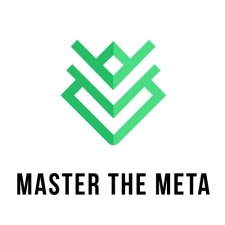Master the Meta is a free newsletter focused on analysing the business strategy of the gaming industry. MTM and PG.biz have partnered on a weekly column to not only bring you industry moving news, but also short analyses on each. To check out this week’s entire meta, visit www.masterthemeta.com!
Last week Unity launched its new Game Growth Program. Through this accelerator program (teaser video here), Unity is looking to partner with select free-to-play mobile game developers to:
- Design and run strategic user acquisition (UA) campaigns that bring in new players
- Provide support with analyzing game economies and implementing optimizations
- Manage and optimize ad placements and in-app purchases
- Provide access to various Unity tools to help increase player lifetime value
The program uses a revenue-sharing business model where Unity fronts the UA costs, recoups those costs first, and then equally shares all subsequent profits with the mobile game developer. It is also important to note that program participants retain full ownership of their studio and intellectual property. To get into the program there is a testing phase where various game metrics are checked and funding up to $1,000 can be gained. Once in the program, future UA funding amounts vary depending on a game’s performance and scaling success. However, in general, mobile game developers who partner with Unity should gain a significant UA advantage.
With this move, Unity is following in the footsteps of AppLovin and ironSource, who not only own ad networks but also help publish games through Lion Studios and Supersonic Games, respectively. Further, Unity is throwing its hat in the competitive ring of notable mobile gaming UA partners, such as Tilting Point, N3twork, and SuperScale. All of these other companies should be closely (if not nervously) watching, because over 50% of mobile game developers are already part of the Unity ecosystem, mostly through using the Unity Game Engine.
As we covered in our Unity deep-dive, the company’s wide range of offerings touch upon many aspects of the mobile gaming value chain, and Unity’s solutions for various developer needs will always seamlessly integrate with its game engine. Plus, having multiple solutions in one place is often a better experience than integrating a bunch of different third-party product/service providers.
Broadly, the Game Growth Program is just another way for Unity to double down on its “land-and-expand” strategy. Given how Unity’s Operate side of the business is mostly driven by Unity Ads, this move makes sense. Not only is potential revenue share upside nice to see, but it showcases the power of its other Operate solutions to a large market of mobile game developers who don’t use them but are already part of the Unity ecosystem. Frankly, the move is coming quite late, but at least Unity has now acknowledged the opportunity.
With the carrot of fronting UA costs, Unity will likely look to improve, upsell, and cross-sell its Operate solutions to program partners, ecosystem participants, and enthusiastic onlookers. There might also be fringe benefits attached to building up a portfolio of program partners over time to help protect Unity’s ads business against the impending IDFA apocalypse. Of course, the program currently feels too small to make that a leading reason.
All that said, improving in-game metrics and scaling UA is no easy task, especially in partner-style relationships. Yes, Unity has many solutions to help with those activities, such as Personalized Advertising, Contextual Advertising, Unity Ads, Unity IAPs, deltaDNA, GameTune, and GameSim. But there is a big difference between the game developer deciding how best to use those solutions versus Unity ensuring optimal usage of those solutions.
The graveyard of companies that have tried to make this business model work in the past is a large one, mainly because developers’ creative visions often clash with the ROI-driven visions of the UA/publishing partners. It remains to be seen whether Unity is a great partner, which ultimately determines how well the program will pay for itself, generate profits, last a long time, and drive long-term growth for the Operate side of the business.
If you want to read our Unity deep dive, our IDFA roundup or sign up for our free newsletter that additionally covers why Playrix’s ads were banned, Embracer Group’s recent $648M raise and the Huya-DouYu merger, make sure to visit masterthemeta.com.
Master the Meta is a newsletter focused on analysing the business strategy of the gaming industry. It is run by Aaron Bush and Abhimanyu Kumar. To receive future editions in your inbox sign up here:





















